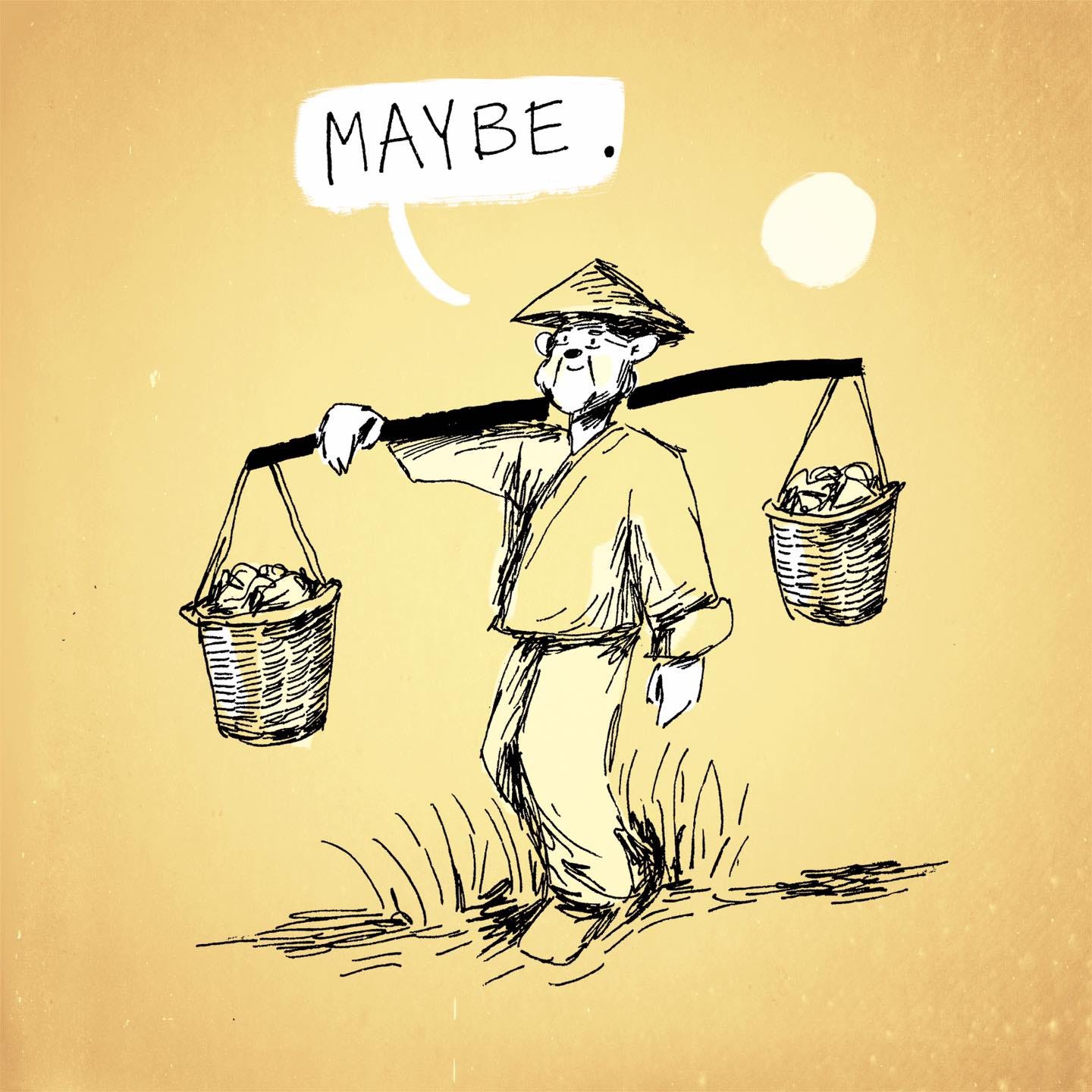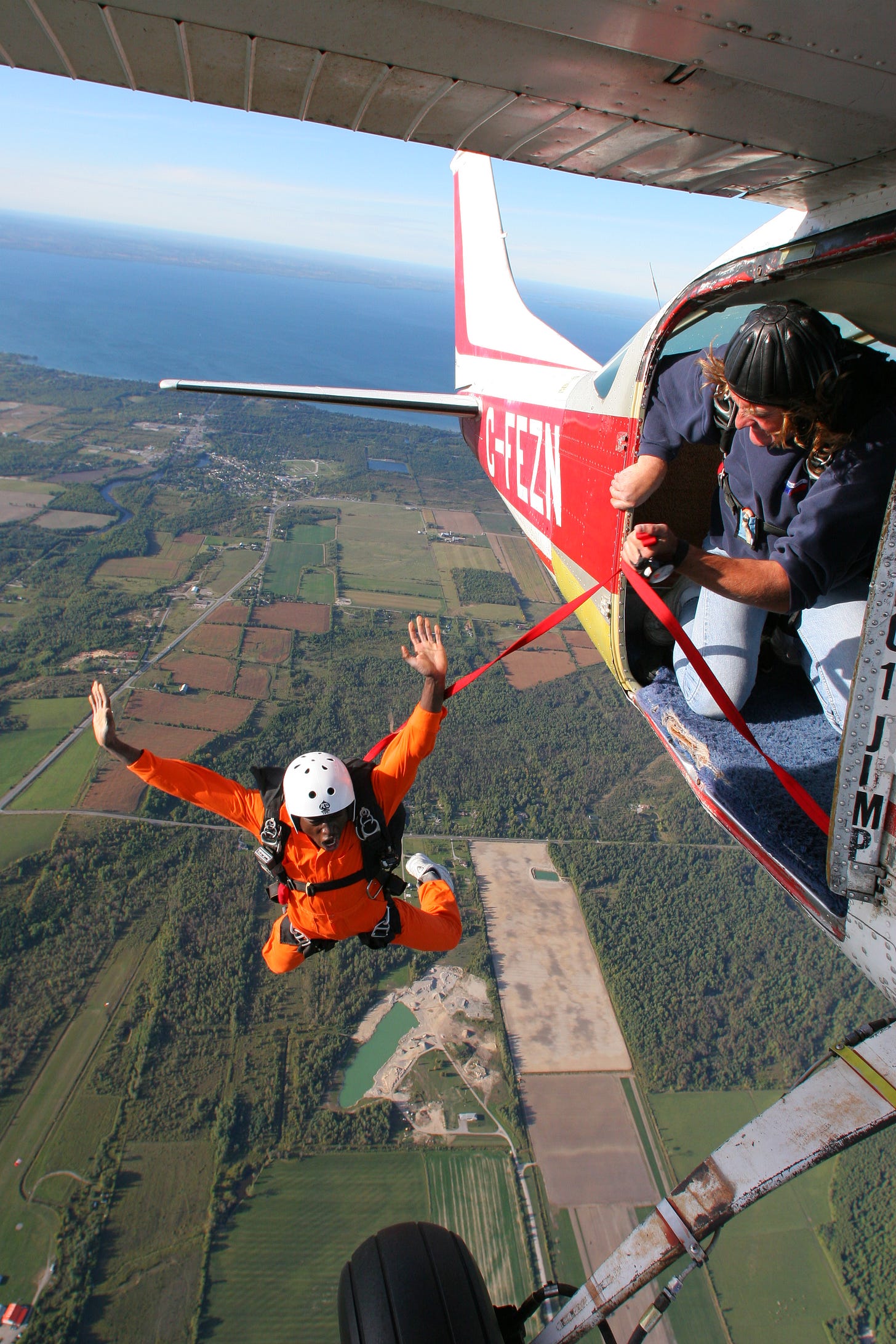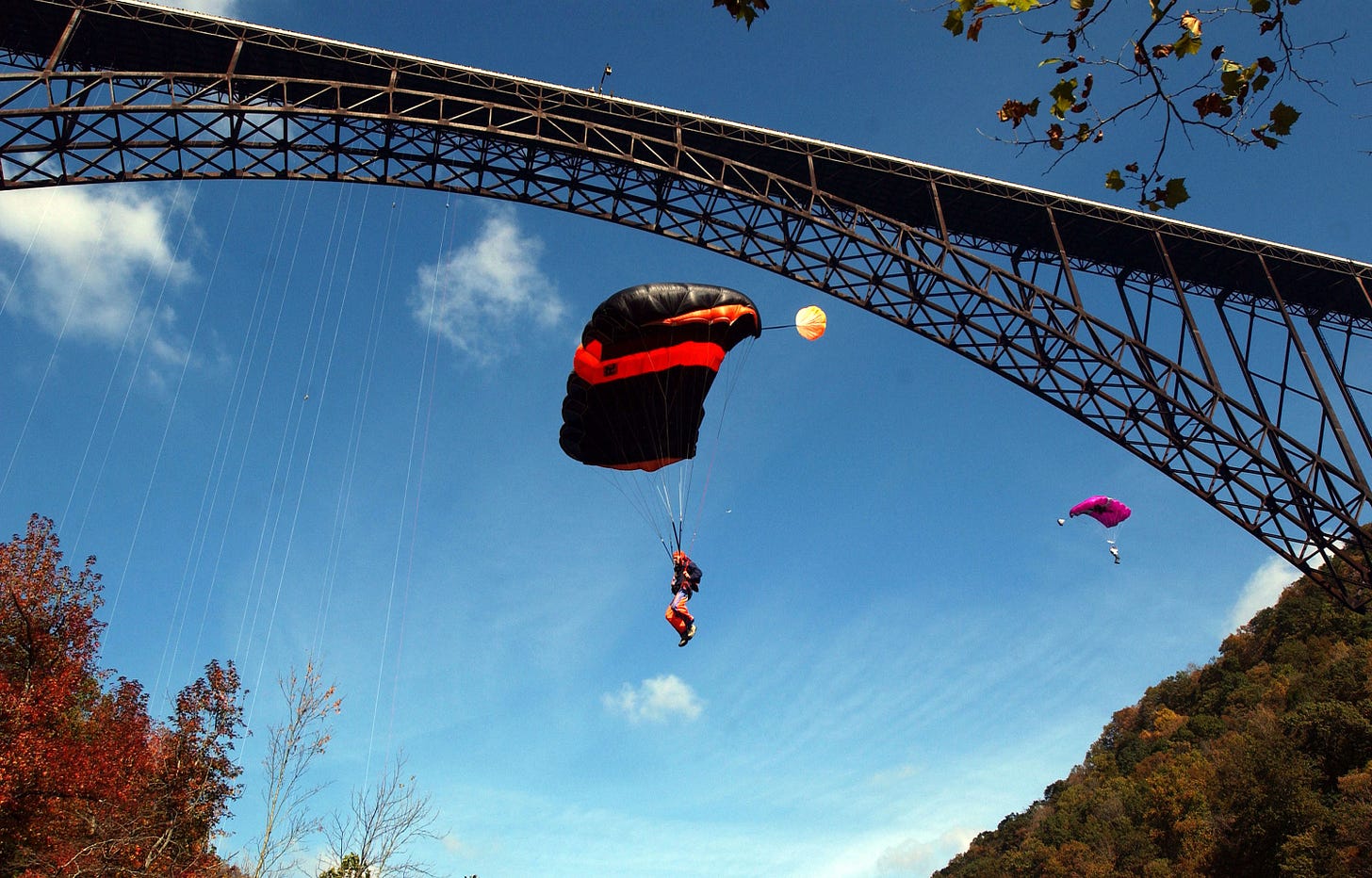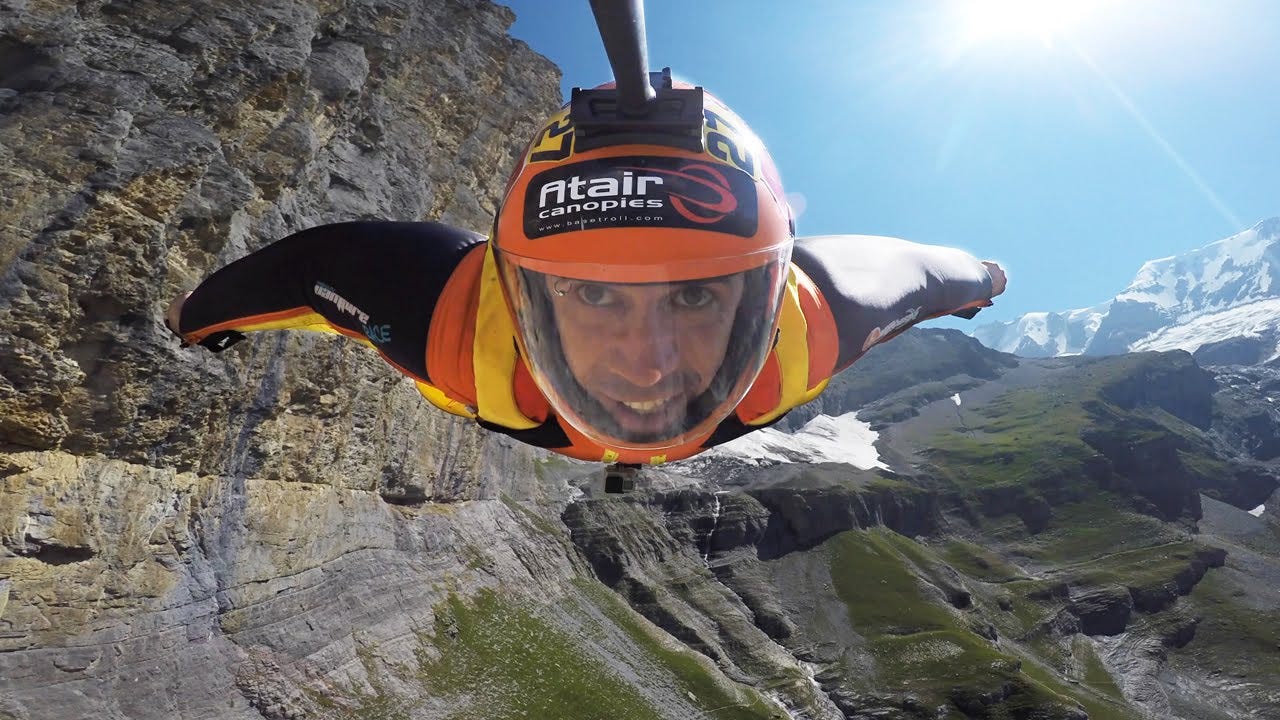In the last couple of posts in this thread, we unpacked how Pascal's Wager, Ockham's Razor, and Bayesian Probability go a long way to helping us stay oriented in confusing/magical/critical terrain.
Then we drilled into the Bayesian bit–introducing a “three bucket ontology” that allows us to sort and sift experiences and explanations as we validate them over time.
Super important as everything in the world goes exponential, including our access to non-ordinary states of consciousness (NOSCs) and our exposure to existential risks. All in the midst of a meaning crisis where formerly trustworthy institutions have collapsed, and we’re pretty much making it up as we go along.
Rather than simply thinking of things as always true or obviously false, we can treat things as hypotheses that over time become more trustable theorems and finally, laws.
So now we want to add a third analogy to navigate the free fall that often arises when we delay certainty in favor of Bayesian provisionality–i.e. what it’s actually like to steer through this less than rock solid terrain without losing our minds or our lives.
Perhaps the most familiar example of this kind of deliberately delayed certainty is Alan Watt’s story of the Chinese Farmer.
You might remember the punchline, “Good Luck, bad luck, who knows? “
From losing his horse to then finding a herd of mustangs, to his son breaking his leg that then saves him from an army draft, to his house burning down, only to be rebuilt on higher ground safe from a flood, the simple farmer’s conclusion at each step is always “good luck, bad luck, who knows?”
And he keeps on living in the meantime, unwilling to collapse the world into false opposites of good or bad.
It’s good advice.
Unless you’re a Taoist farmer sage yourself, it can be hard to stick with when the going gets tough.
We’re reflexively prone to labeling things as good or bad, and spinning up stories that explain exactly why life has happened that way to us, or that this is the way things really are.
Storytelling monkeys are we!
But that sentiment, of delaying judgment as long as possible to see how things turn out, is an essential part of learning to “go with the Flow” even, and especially as the ground appears to be shifting under our feet.
So let’s build on that parable of the Chinese Farmer a bit, and explore what navigating varying degrees of Bayesian uncertainty might look like in real life.
We can picture it like jumping out of a plane with a parachute. The freefall part is the scary but exhilarating stage of Bayesian “who knows?” uncertainty. Throwing the parachute represents choosing one possibility or the other, and committing to a specific narrative explanation.
In this skydiving analogy, we can explore different levels of certainty, from safest to riskiest. The longer we delay throwing our parachute, the more fun (and dangerous) the experience of surfing Reality becomes.
Level One: Tandem Skydiving
At Level One, we're curious enough about that whole free-thinking Jonathan Livingston Seagull thing, that we decide we'd like to experience flight for ourselves.
We're itching to leave the solid ground of consensus reality behind. But we're not ready to trust ourselves with pulling it off solo.
This might be akin to asking edgy questions in high school or Sunday school–testing the boundaries by questioning your teachers about how could the Old Testament god be such a murderous bastard or weren’t the Founding Fathers kind of hypocritical to talk about freedom while owning slaves?
You want to test the boundaries of Consensus Reality a little, but you don’t want to break your whole worldview. And crucially, you tend to trust your existing teachers to sort things out for you and get you back to terra firma.
When it’s time to leap, what do you have to do?
Not much.
You’re strapped to your instructor like a melon-headed Baby Bjorn. When you fall out of the plane (i.e. Consensus Reality) it’s terrifying, and you’re afraid you’re gonna die.
Only thing you care about is making sure that instructor throws that goddamn parachute and you get back to solid ground as soon as possible.
That’s Level One reality surfing. You crave freedom but you remain terrified of falling.
But once you’re safely back on solid ground?
You flip through the GoPro pics, you remember the adrenaline rush. Against all better judgment, you begin to wonder if you might want to go back up, and do it by yourself next time.
So you log the classroom hours for a solo jump and hop back in the plane. This time, no humiliating papoose. You’re free as a bird!
Not really.
No way a flight school would stay in business if they relied on folks not choking during the Big Leap.
As the old SEAL skydiving joke goes, “don’t worry, you’ve got the rest of your life to figure it out!”
This stage of flirting with freefall might be akin to the kid who studies existential philosophy and decolonial Marxism in college. Grows his hair long. Dresses in black. Tacks the obligatory Che Guevara poster up in his dormroom.
#questionauthority
Harasses his parents at Christmas about their capitulation to the capitalist machine.
But after a few aimless years following Phish (or ski bumming in Vail) after graduation, they get their haircut, and land a straight job selling biohacking coffee online.
So while you, the college radical, might’ve thought you were fully independent, in reality there was a static line connecting the plane to your backpack the whole time. All you had to do was fall out, and that line made damn sure your chute ripped out safely above you.
That’s Level Two Reality Surfing: You might have imagined you were flying free, but the tether of a desk job and mortgage was waiting for you all along.
But if you resent that leash and crave even more raw reality, you can push it further still.
You learn to do away with the static line, throw your own chute, and stick your own landings. You might even abandon the safety of 10,000 feet of air to figure it out, and start BASE jumping off bridges and cliffs.
This phase would be akin to radical religious/philosophical inquiry. Almost no one gets to this level casually, or without serious commitment to managing the risks.
Taking monastic vows and going into a retreat, diving deep into float tanks and psychedelics (a la John Lilly), charting weird and wild transhumanist possibilities in the AI/Tech Singularity realm.
That’s Level Three Reality Surfing: there’s no one to strap yourself to like the friendly flight instructor. There’s no static line to pull your rip cord for you if you get too nervous. You’re 100% responsible for keeping your wits and not losing your tits. Serious stuff, but exhilarating if you can pull it off.
***
Until one day, even that gets less interesting and you find yourself clambering into a flying squirrel suit (AKA a “wingsuit”).
With these bad boys, the whole calculus has turned upside down. Rather than trying to throw your parachute to return to safe Consensus Reality as soon as possible, you delay that fateful moment as long as possible.
This is 100% the Red Pill/Bucket #3 Ontological Zone. If this reality is true, then nothing else before it was as real or matters as much.
You surf the edge of mountains and forests, skimming the world as it rushes past you. (what’s known as “proximity flying” in the game)
This, by all accounts of those who partake, is the heroin of action sports (and reality surfing).
Such a pure rush, so raw, so real that nothing else feels remotely interesting once you’ve tried it. Unfortunately, it has a daunting survival rate for even the best who attempt it.
Less than 1% of 1% of humans ever make it here. Few of those who do die of old age.
Dean Potter, one of the preeminent extreme sports masters of his generation, ultimately got clipped wingsuiting in Yosemite (I wrote about that sad day in Stealing Fire).
Many others have rolled those dice and come up snake eyes before and since.
In the ontological version, this is where you’ve taken that Chinese farmer’s “good luck, bad luck, who knows?” to the sticking point. It’s the terrain the McKenna brothers so memorably termed “the Brotherhood of the Screaming Abyss.”
Not all who peer over the edge make it back unchanged.
Robert Anton Wilson called this realm, that place where nothing is true, and everything’s permitted, the Chapel Perilous (after the Grail legends). It’s since become a meme in the DMT tripper community to reflect the infinite hall of mirrors of Hyperspace.
“One who has entered the Chapel Perilous,” Wilson warns, “returns one of two things: insane, or agnostic!”
It’s the final, utterly perfect ending to Dark Side of the Moon
All that you touch
And all that you see
All that you taste
All you feel
And all that you love
And all that you hate
All you distrust
All you save
And all that you give
And all that you deal
And all that you buy
Beg, borrow or steal
And all you create
And all you destroy
And all that you do
And all that you say
And all that you eat
And everyone you meet (everyone you meet)
And all that you slight
And everyone you fight
And all that is now
And all that is gone
And all that's to come
And everything under the sun is in tune
But the sun is eclipsed by the moon
(we all remember how that went for their lead guitarist, Syd Barrett who “reached for the Secret too soon.” An ontological wingsuiter to the end).
So that’s Level Four Reality Surfing: staying in the “Who Knows?” not knowing as long as possible before finally throwing your parachute and touching back down safely.
Every survival instinct in your mammalian brain screaming at you to flinch, to cling, to clutch at safety, security, solidity. But at this stage of The Game, you know that to succumb to instinct will be your undoing.
But if you can not flinch, not clutch, then you can do something that mere mortals have only dreamed of.
To fly. Not like a lycra squirrel. Or even an enlightened seagull.
But like a god.
Witnessing with a Capital W the frothy edge of the quantum foam of unfolding reality.
A wave? A particle?
Good? Evil?
Wrongdoing? Rightdoing?
“Out there, beyond them both is a field,” a wingsuiting Sufi once said.
“I’ll meet you there!”











I came across you on a free fall. While you are way more educated and articulate than I am, I get it, me too, So good to know I am not alone, that I am not the crazy one. Wouldn't it be nice if team human was a team thats end goal was for everyone to win. Every player was commited to being 1% better everyday. Every team member helped their brothers and sisters to reach that 1% goal. Every team member knew that that the work was hard, and the future was unpredictable, but they all had faith that the were doing the right thing for the right reasons. And every day individually and collective they re- evaluated the definition of the right thing, and the right reasons.
What a ride, what a rush 😉. Just a wee bit of reflection if I may sir Jamie.
Anyone with the least bit of self-awareness should be able to recognize and acknowledge the destructive stupidity of becoming self-righteously bound up in the conventional mind of Consensus, or tribal, Reality. In times of fear and confusion human primates flock to authoritarian leaders, default to tribal tropes and the comfort of conventional beliefs and cultic associations. Humankind obviously needs to out-grow such childish motives and masks, and learn to think outside the box/bucket of merely social-political-religious conventions if we are to get our collective shite together.
But, respectfully, I must say that virtually none of the innovative thinkers, seekers, and glorious pontificators ever really get beyond a rather idealistic and self-based “solution” or reaction to the root egoic problem of Consensus-Reality bondage. In other words, there is an obvious and very useful distinction between your ontological buckets 1 and 2, but I would suggest that the distinctions that you make between buckets 2, 3, and 4 don’t really get to the “answer” or Realization that they seem to seek and suggest.
What about the “Mighty Monad” that Shines Prior to all ecstatic experiences of temporary absorptive Oneness? The crucial thing to understand is that all the higher/deeper “levels of Reality” that you are describing are really variations on the same kind of “conventional meditation”. “Conventional meditation” can lead to an infinite variety of far-out experiences but it never fully and finally transcend the ego-mind of separateness. As explained by my Teacher:
“Conventional meditation is a matter of getting attention absorbed in something, getting it absorbed in one kind of an object or another. Absorptive meditation is not real meditation. Absorptive meditation is beginner’s meditation, it is egoic meditation. It is the ego, or attention, getting absorbed in something, distracted from itself, and yet not ultimately transcending itself.”
Let us not forget, ignore, or neglect the Magnificent Monad; the ultimate point, purpose, and Happiness that completely transcends all the ego-based buckets, or Levels of Reality. The problem with making too much hay about the in-depth experiential potentials of the body-mind is that they always fall short of the ultimate point, purpose, and happiness of Existence which cannot be attained through ego-efforts of any kind.
Until this is really understood we will continue to be ensnared in our willful adventures of bucketing and unbucketing, that only seem to lead elsewhere but always return us back to ourselves. No matter how hard you try and how high you fly you cannot “take heaven by storm”. Icarus comes to mind.
Let us not confuse, conflate, or negate the Divine heart of Reality in the gobsmacking slurry of the countless buckets and higher states of our experiential possibilities. To do so is to remain fixed and fascinated in all the karmic and dharmic possibilities of cosmic wandering and to never find your way back Home.
Peace out,
David